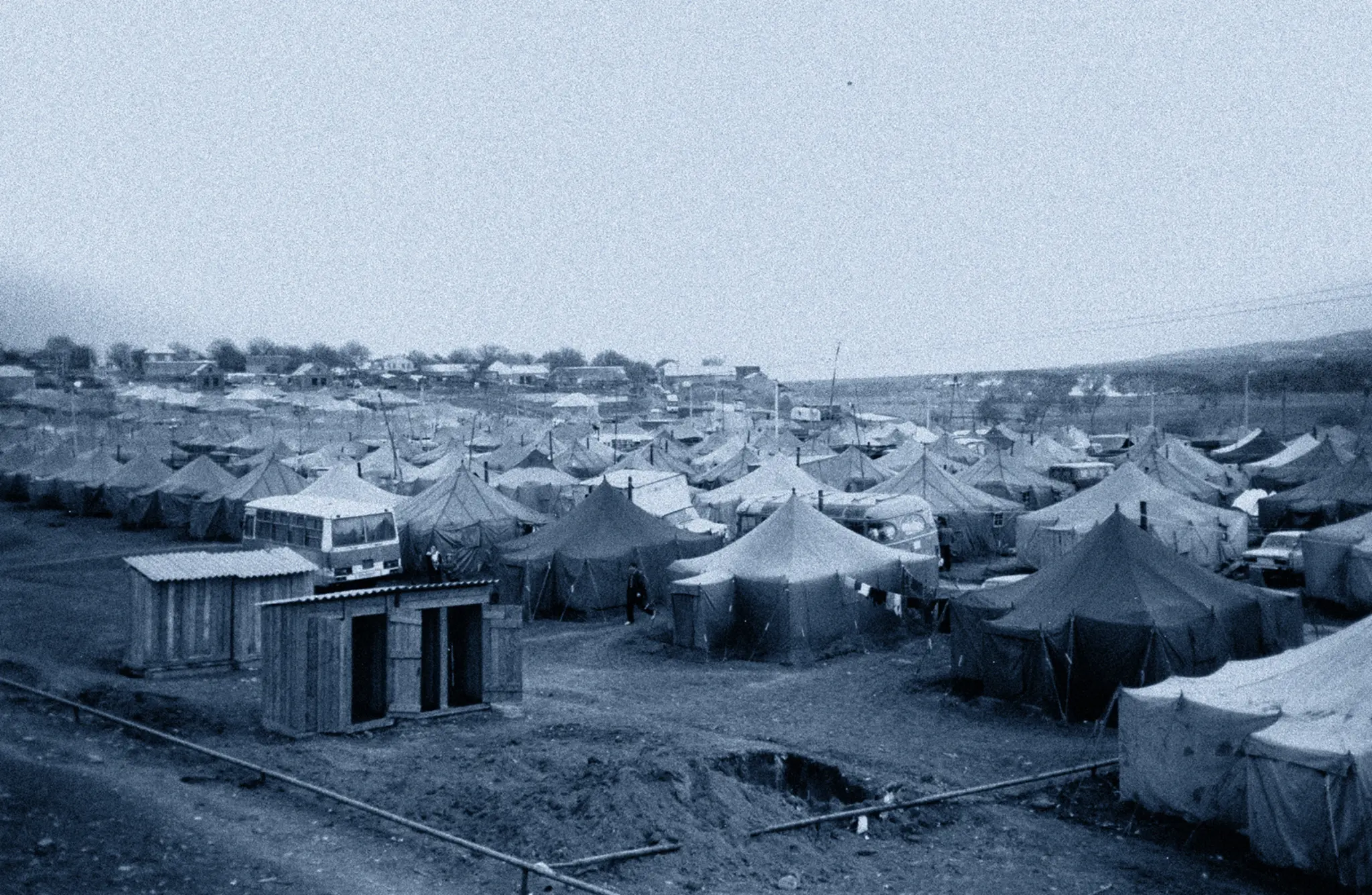Testimonies
Torture of civilians
International humanitarian law absolutely prohibits the use of torture. This unconditional ban is also encompassed in a number of international human rights treaties, including: the 1949 Geneva Conventions and their 1977 Additional Protocols; 1950 European Convention on Human Rights; 1966 International Covenant on Civil and Political Rights; 1985 Convention against Torture and Other Cruel, Inhuman or Degrading Treatment or Punishment; 1998 Rome Statute of the International Criminal Court and other international and regional agreements which prohibit various forms of cruel, inhuman and degrading treatment, as well as punishment, including in armed conflicts.[1]
According to Article 1 of the Convention against Torture, the definition of torture includes four elements:
- Intent;
- Any act by which severe pain or suffering, whether physical or mental, is intentionally inflicted on a person;
- For such purposes as obtaining from him or a third person information or a confession, or intimidating or coercing him, or for any reason based on discrimination of any kind;
- Inflicted by or at the instigation of or with the consent or acquiescence of a public official or other person acting in an official capacity.[2]
Unfortunately, in various armed conflicts that occur across the world, the above prohibitions are maliciously and massively ignored. The conflict in the North Caucasus is no exception. As the statistics of the Natalia Estemirova Documentation Center Database (hereinafter the Database) demonstrate, torture of the civilian population was a common method used on an impressive scale to obtain information and intimidate society as a whole.[3]
The practice of torture during the armed conflict in the North Caucasus, particularly in the Chechen Republic, was accompanied by other violations. In some cases, however, due to insufficient information concerning the nature of the violation, it was difficult to confirm whether the circumstances did indeed amount to torture. Analysts responsible for registering information in the Database only register violations qualifying as torture on the basis of the most accurate information. In light of this, the following publication is divided into two parts. The first part represents the statistics and accounts relating to victims, as well as the nature of the violations, which allow for precise conclusions to be drawn about the use of torture against the victim. The second part describes violations, which could have been qualified as torture or violations which accompanied torture. Such violations include cruel and inhuman treatment, sexual offences, murder with particular cruelty, as well as the beating of victims and other injuries.
Statistics of violations of torture against the civilian population
The Database contains information on at least 1,295 civilian victims of torture in the context of the conflict throughout the region, of which 1,173 or 91% suffered in the Chechen Republic. As can be seen from chart 1, the majority of the crimes in Chechnya occurred between 2000 and 2002.
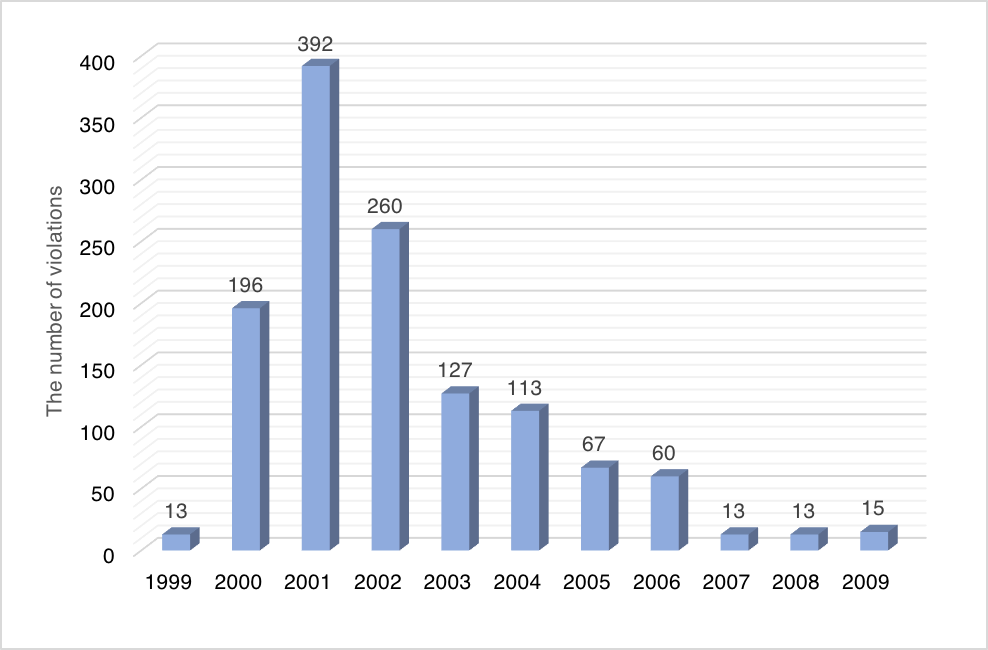
Most of the cases took place in 2001, with at least 390 cases of the torture of civilians within the Republic registered in the Database.[4]
The majority of the victims in Chechnya – 1,119 victims – were men. At least 54 women were also among the victims.
In 1,131 cases a connection was established between those responsible for the torture and the actions of the Russian Federation security forces or forces acting in their interests. In eight of the cases, information reveals that irregular fighters were responsible for such violations. In the remaining 34 cases those responsible for the violations could not be identified.
At least 78 of the victims subjected to torture were minors; 67 of whom were teenagers and 11 were children under the age of 14. One such case relates to two girls aged four and five from Urus-Martan. On the night of 29 December 2000, the military entered the family’s house demanding money and gold. Unsatisfied with the looted goods, the military began torturing the girls’ grandfather and grandmother using an iron. The children themselves were also subjected to torture as the soldiers stepped on the children’s feet with their boots asking them where the money was kept. The military only left the house in the morning once they had stolen all the family’s valuables. The district prosecutor’s office initiated a criminal case in relation to these events.[5]
Other victims of torture in Chechnya belonged to vulnerable groups such as: those suffering from sickness (at least 42 victims); internally displaced persons (37 victims); those with disabilities (27 victims); the elderly (30 victims); those in a helpless state (17 victims); those with mental disorders (eight victims); and pregnant women (five victims) (chart 2).
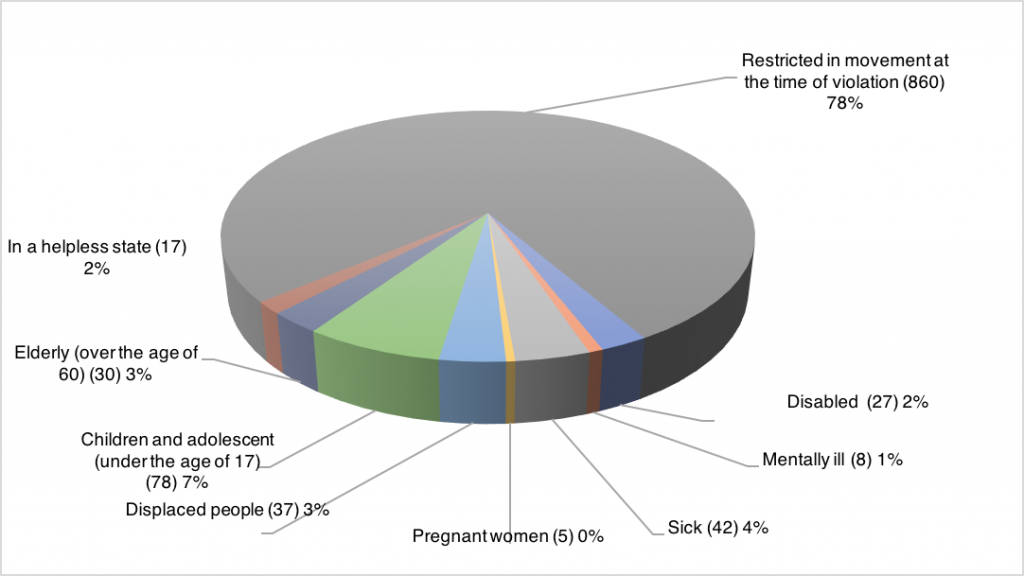
In one case, instances of torture and murder were recorded during a high-profile incident in the village of Dai in the Shatoysky District. On 11 January 2001, during a special operation by the Russian military which began in the mountain villages of the region, a UAZ car carrying a driver and five passengers and returning to the village was shelled by military personnel. As a result of the shelling, three citizens were killed; the remaining three citizens, including a pregnant woman who was also the mother of a large family, were caught and interrogated near the scene of the incident. During the interrogation, according to the testimony of eyewitnesses, the military personnel tortured the three captured civilians using a nutcracker and hammer and subsequently slit the throat of two of the victims. The bodies were then placed in a UAZ vehicle and set alight. Among those killed was a 65-year-old director of a rural school.[6] It must be mentioned that this incident generated a lot of publicity and is itself unique, given that the case against the military was taken to court. As a result, in 2007, a major from the GRU special forces was convicted of murder and sentenced to nine years’ imprisonment to be served in a high-security penal colony. Three other members of the special forces were convicted in absentia.[7]
The majority of the victims (860) tortured in Chechnya were restricted of their freedom at the time of the violation and thus were unable to escape from the perpetrators. In just over a third of all the cases in the Republic (414 cases), the torture was followed by the violation of the right to life, meaning that the victim was either killed or disappeared.
Among the methods and injuries of torture registered in the Database are instances of bone fractures; scalp removal; cutting off ears; removal of nails from fingers and toes; use of gas; suffocation; stab wounds; and the deprivation of food and water. One of the more common methods of torture against the civilian population was the use of electric shocks: at least 35 such victims are registered in the Database. Electric wires were connected to open areas of human bodies, including the genitals of the victim. In some cases, current sources of power were used, while in others specially prepared devices were used. For example, during the interrogation of kidnapped detainees during a sweeping operation (zachistka) in the village of Samashki on 22-23 April 2002, soldiers tortured the victims in equipped compartments of an Ural car, by placing a rubber hat with wires on their heads and connecting the wires to a source of electric current.[8]
During illegal arrests and mass kidnappings, victims were often kept in premises unfit for detention such as filtration points, pits, cells, secret prisons and other similar types of premises. In such situations, the treatment of detainees could be qualified as inhuman or as torture given the deprivation of the most basic needs.
More than half of the cases of torture in the Republic (624 incidents) occurred in the context of large-scale or targeted sweeping and special operations.[9] Such law enforcement operations were aimed at exposing irregular fighters and attacks were carried out with the mass violation of the rights of the civilian population, including illegal arrests, lootings, beatings, torture, disappearances and murders. The actions of security forces were often punitive. For instance, on 27 April 2000, a zachistka was carried out in the village of Tsotsi-Yurt, during which civilians from at least 30 houses were abused and had their properties pillaged. Whilst checking civilians’ passports, the military destroyed or damaged the documents and conducted illegal arrests. As a result of the special operation, several local residents were kidnapped and at least two subsequently disappeared. Two of the victims were found emaciated and beaten on the Rostov-Baku highway a few days later. The hands and feet of one of the victims were stabbed with skewers. According to the victim:
We were not interrogated, but only beaten. They were saying repeatedly that they know that we are not fighters. During the entire stay in this basement we were denied food, only sometimes we were given water.[10]
One of the victims suffered from tuberculosis at the time of his kidnapping. He was detained in a basement where his torturers would throw in smoke bombs and close the basement door. Following this exercise, tear gas was also used which began to poison him. As a result, the man died at home following his release.
Death as a result of torture or beatings is marked as a separate category in the Database and at least 85 such cases of cruelty against civilians in Chechnya have been recorded. In at least 77 cases, the victim died from the actions of law enforcement agencies of the Russian Federation or forces acting in their interests. Two victims suffered torture at the hands of irregular fighters and in six cases it was not possible to determine the identity of the perpetrators. In many cases, victims who had been badly injured but were still alive were released from detention to die outside:
Thus, on 26 November 2001, during a zachistka of the village of Avtury, the military kidnapped the owner of house and his nephew from his own house. The detainees were tortured and beaten in a nearby forest. The servicemen both forcibly poured kerosene into their mouths with the words: “You have been fasting all day, you need to eat”.[11]
The victims were then thrown out onto the Avtury-Shali highway; shortly thereafter, the nephew passed away.
As can be seen from the materials and statistics of the Database, torture and inhuman and degrading treatment also served perpetrators with mercenary motives. Being a cruel method of inflicting pressure on victims, torture was often used as a means to extort victims and their relatives of their property. Under such duress, victims would often not wait for ransom requests but rather offered property to the perpetrators themselves.
Such extortion was recorded in the Database in at least 102 cases; in some incidents, ransom was paid in exchange for the corpse of the victim so that relatives were able to bury the body. Among the requested items for ransom, the most common were monetary payments (including, foreign currency), jewelry, weapons, cars and alcohol. An example of such a case occurred on 3 July 2001 in the village of Makhkety when two brothers disappeared while harvesting firewood on the outskirts of the village. Following 20 days of searching for their whereabouts and negotiations with military personnel, the two brothers were returned to their parents in exchange for a ransom: three automatic rifles and 1,000 USD. According to witnesses, the brothers had almost been beaten to death.[12]
Thus, as the statistics of the Natalia Estemirova Documentation Center reveal, torture of the civilian population was systematic and served various motives, ranging from punitive special operations to mercenary motives. This included the desire for enrichment and also to intimidate civilians in order to deter them from cooperating with insurgents. Geographically, cases of torture were recorded in almost all districts of the Republic, with the most cases occurring in Grozny (see chart 3).[13]

Statistics of violations which could have been qualified as torture against the civilian population
As mentioned previously, a number of violations did not squarely fit within the definition of torture due to insufficient information being available, and were consequently registered in the Database as other violations by the analysts. With limited information available, it was not always possible to draw a line between, for example, beatings or crimes of a sexual nature and the crime of torture. This section describes violations, both mental and physical harms suffered by the victims, which could possibly be defined as torture.
Thus, the Database contains information about victims among the civilian population in Chechnya of the following violations: beatings or other injuries (1,106 victims); murder committed with particular cruelty (383 victims); inhuman or degrading treatment (297 victims); and crimes against sexual inviolability (30 victims). It should be noted that cruel treatment was not only inflicted on those that were still living: the mutilation of corpses was recorded in at least 280 cases. The project’s website contains publications which describe in detail some of the violations listed above. However, examples of specific incidents in which torture may have been used are also provided below.
On the night of 23 February 2003, a local resident was abducted from his house in the village of Dachu-Borzoy. According to available data, soldiers arrived in a military armored personnel carrier (APC) and broke into the sleeping family’s house. They began to inspect the rooms and subsequently started beating the owner. His wife, who began protesting, was beaten with machine guns and his elderly mother was also hit. The soldiers then threw the man into the APC and took him to an unknown destination. The large number of blood stains found in the house is indicative of the use of a knife to sustain injuries. The same night two other locals were kidnapped and disappeared.[14]
In other cases, the methods used to murder the victims bore semblances to the use of torture. For example, in March 2000, corpses were discovered near a cemetery in the village of Tangi-Chu. The ears and noses of the bodies had been cut off and wires were found around their necks. Based on the description of the corpses, military personnel had most likely tied the victims – who were still alive – to the APCs and had tortured them in a manner consistent with the injuries found on the corpses. It has been established that one of the victims, a local resident, had been kidnapped by the military two weeks earlier from his own house during the noon prayer. A teacher, tractor driver and housewife were identified among the other bodies.[15]
Often, the infliction of physical and especially mental suffering could only be determined on the basis of the victim’s subjective perception of a situation. However, this does not always reveal the complete picture of an incident. For instance, on 2 June 2004, a number of women were arrested at the Government House in Grozny during a spontaneous rally, organized by relatives of victims who had disappeared during different periods in Chechnya.
One of the arrested women, mother of a young disappeared man, described the conditions of the detention following the arrest: “For the time that we were kept (this is more than two days), we were subjected to a humiliation that is beyond words.”
By means of an example, she recounted that when the detainees had asked for water, officers of the security forces instead gave them a mug of urine. While providing a subjective account of her experience, the available details of the incident are limited and thus the entirety of the ordeal can only be inferred. In terms of the consequences, however, it is known that following her release, she spent another week in bed in poor condition.[16]
Considering the above, many violations may have been accompanied by the use of torture, and thus the scale of the violations described in this publication most likely covers a much larger number of torture victims in the Republic. As reflected in the statistics, and the accounts of victims and witnesses, various methods of torture were executed on a large scale against the civilian population of Chechnya.
The statistics provided have been revised and verified until 12 April 2019.
The data is subject to change in view of the ongoing work by the Natalia Estemirova Documentation Center on the search and identification of victims of the armed conflict.
Audio library
Listen to the story of a victim of rape and robbery carried out by soldiers.
For details on this story, see the “Audio” section.
Listen to the story of a journalist detained and tortured by the military.
For details on this story, see the “Audio” section.
Media library

NEDC document 17014 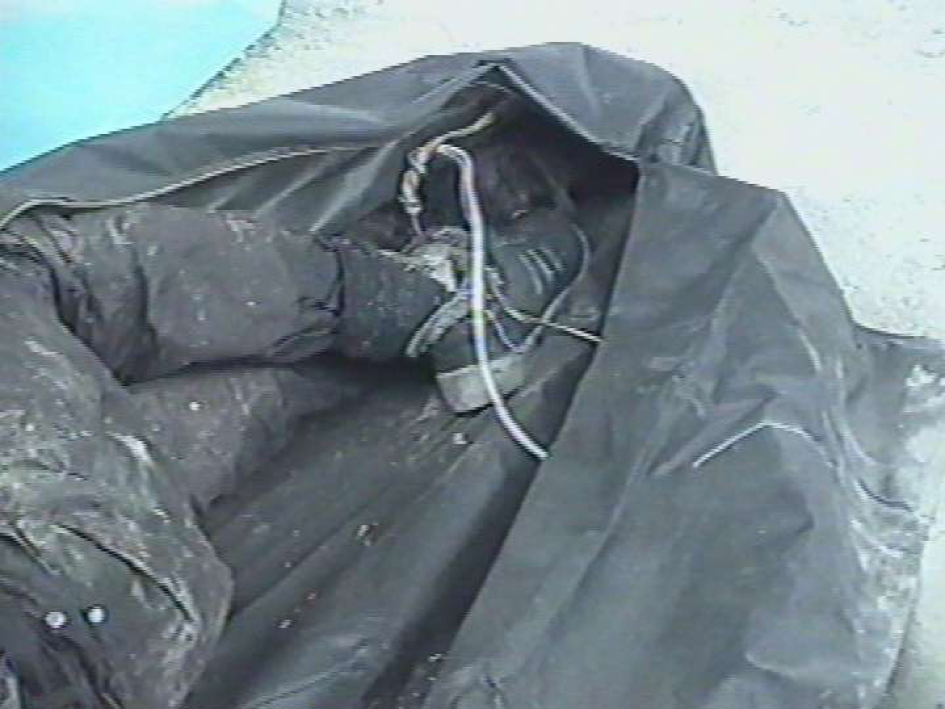
NEDC document 17458 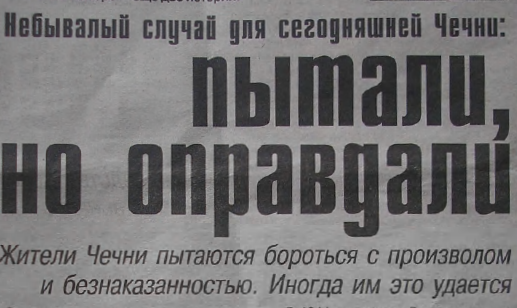
NEDC document 26553 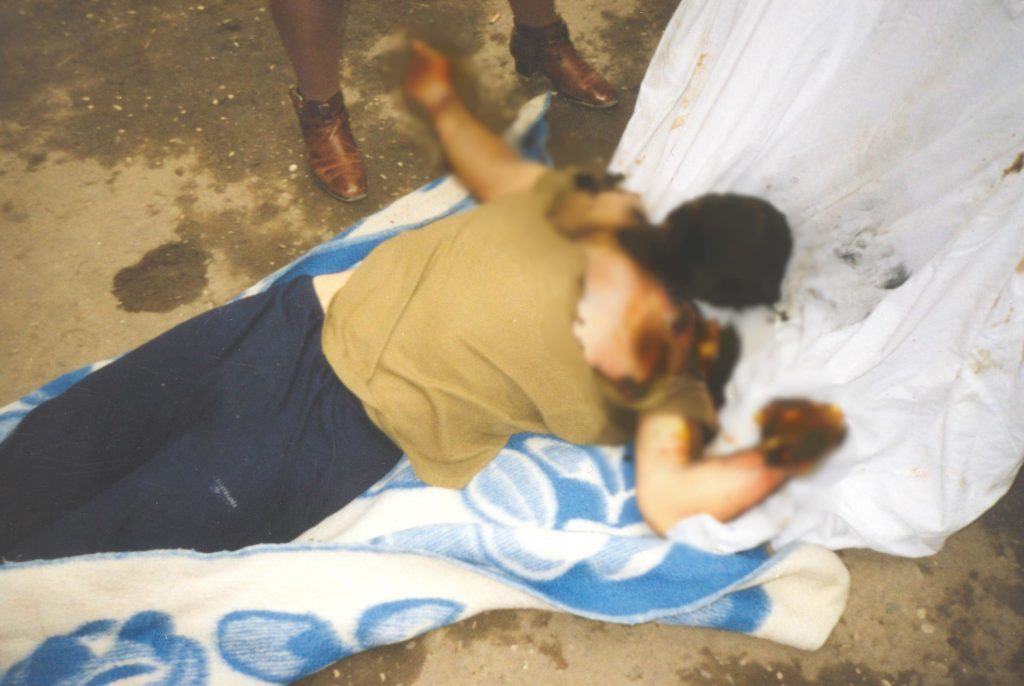
NEDC document 32154 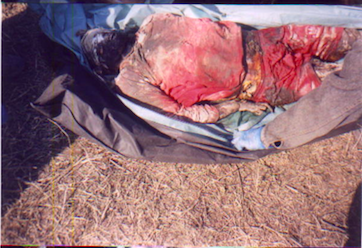
NEDC document 16997 
NEDC document 18941
References
[1]See, for example, the International Committee of the Red Cross, «Prohibition and Punishment of torture and other forms of ill-treatment», June 2014, https://www.icrc.org/ru/doc/assets/files/2014/141443_ru_torture_factsheet_ru%5b1%5d.pdf.
[2]Convention against Torture and Other Cruel, Inhuman or Degrading Treatment or Punishment, December 10, 1984, article 1. Also, see the interpretation of Article 1 in the International Journal of the Red Cross, «Truly the leitmotif …»: prohibition of torture and other forms of ill-treatment international humanitarian law. (C. Droege), vol. 89, No. 867, September 2007, https://www.icrc.org/ru/doc/resources/documents/article/review/review-867-p515.htm.
[4]During the first conflict and prior to the beginning of the second conflict (1994-1998), 23 cases of the torture of civilians were registered in the Database. Another 14 cases were recorded after the end of the second military conflict in Chechnya (2010-2018). There is a degree of uncertainty in the graph, as in some cases the exact date of the incident was unknown.
[5]Incident № 689 «Torture and robbery of a family in Urus-Martan, December 30, 2000».
[6]Incident № 430 «The killing of civilians in Dai, January 11, 2002».
[7]«Major of the GRU special forces convicted of the murder of six civilians in Chechnya», April 11, 2008, Lenta.ru, https://lenta.ru/lib/14173255/ (accessed on: 06.04.2019).
[8]Incident № 565 «Zachistka in Samashki, April 2002».
[9]For more information on zachistkas, see the publication «Zachistkas and their consequences on civilians» on the project website
[10]Incident № 347 «Zachistka in Tsotsi-Yurt, April 2000».
[11]Incident № 1753 «Zachistka in Avtury, November – December 2001».
[12]Incident № 5004 «Kidnapping of brothers M. in the village of Makhkety, July 2001».
[13]In those areas of Chechnya that are not included in the graph, no case of torture is registered in the Natalia Estemirova Documentation Center Database. In addition, four incidents were marked in the database by the «Famous Landmarks» geography, meaning that there is information about a specific landmark of the incident, but not about the area (for example, the incident occurred along the route on the federal highway Kavkaz «M29»). There is a small uncertainty due to the fact that torture of one person could be committed on the territory of several districts; in some cases, the exact geography of torture was unknown.
[14]Incident № 441 «Kidnapping in Dachu-Borzoy, February 2003».
[15]Document № 8133; Incident № 4145 «Discovering of six corpses in the village of Tangi-Chu, March 2000».
[16]Document № 6299.
